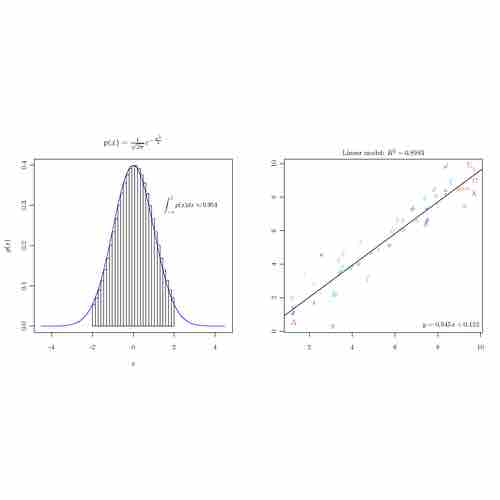Regression Analysis
Regression Analysis is a causal / econometric forecasting method. Some forecasting methods are based on the assumption that it is possible to identify underlying factors that might influence a variable that is being forecast. For example, including information about weather conditions might improve the ability of a model to predict umbrella sales. This is a model of seasonality that shows a regular pattern of up and down fluctuations. In addition to weather, seasonality can also result from holidays and customs such as predicting that sales in college football apparel will be higher during football season as opposed to the off season.
Regression analysis includes a large group of methods that can be used to predict future values of a variable using information about other variables. These methods include both parametric (linear or non-linear) and non-parametric techniques.
Classical assumptions for regression analysis include:
- The sample is representative of the population for the inference prediction.
- The error is a random variable with a mean of zero conditional on the explanatory variables.
- The independent variables are measured with no error. (Note: If this is not so, modeling may be performed instead, using errors-in-variables model techniques).
- The predictors are linearly independent, i.e. it is not possible to express any predictor as a linear combination of the others.
- The errors are uncorrelated, that is, the variance– co-variance matrix of the errors is diagonal, and each non-zero element is the variance of the error.
- The variance of the error is constant across observations (homoscedasticity). (Note: If not, weighted least squares or other methods might instead be used).
In statistics, regression analysis includes many techniques for modeling and analyzing several variables, when the focus is on the relationship between a dependent variable and one or more independent variables. More specifically, regression analysis helps one understand how the typical value of the dependent variable changes when any one of the independent variables is varied, while the other independent variables are held fixed.

Regression analysis
Regression analysis shows the relationship between a dependent variable and one or more independent variables.
Most commonly, regression analysis estimates the conditional expectation of the dependent variable given the independent variables — that is, the average value of the dependent variable when the independent variables are fixed. Less commonly, the focus is on a quantile, or other location parameter of the conditional distribution of the dependent variable given the independent variables. In all cases, the estimation target is a function of the independent variables called the regression function. In regression analysis, it is also of interest to characterize the variation of the dependent variable around the regression function, which can be described by a probability distribution.
Forecast Improvement
Regression analysis is widely used for prediction and forecasting, where its use has substantial overlap with the field of machine learning. Regression analysis is also used to understand which among the independent variables is related to the dependent variable, and to explore the forms of these relationships. In restricted circumstances, regression analysis can be used to infer causal relationships between the independent and dependent variables. However, this can lead to illusions or false relationships, so caution is advisable.
A large body of techniques for carrying out regression analysis has been developed. Familiar methods, such as linear regression and ordinary least squares regression, are parametric, in that the regression function is defined in terms of a finite number of unknown parameters that are estimated from the data. Nonparametric regression refers to techniques that allow the regression function to lie in a specified set of functions, which may be infinite-dimensional.
The performance of regression analysis methods in practice depends on the form of the data generating process and how it relates to the regression approach being used. Since the true form of the data-generating process is generally not known, regression analysis often depends to some extent on making assumptions about this process. These assumptions are sometimes testable if a large amount of data is available. Regression models for prediction are often useful even when the assumptions are moderately violated, although they may not perform optimally. However, in many applications, especially with small effects or questions of causality based on observational data, regression methods give misleading results.